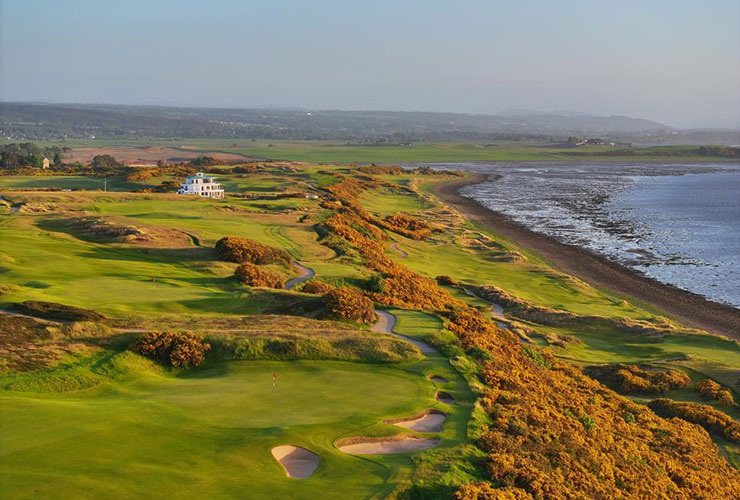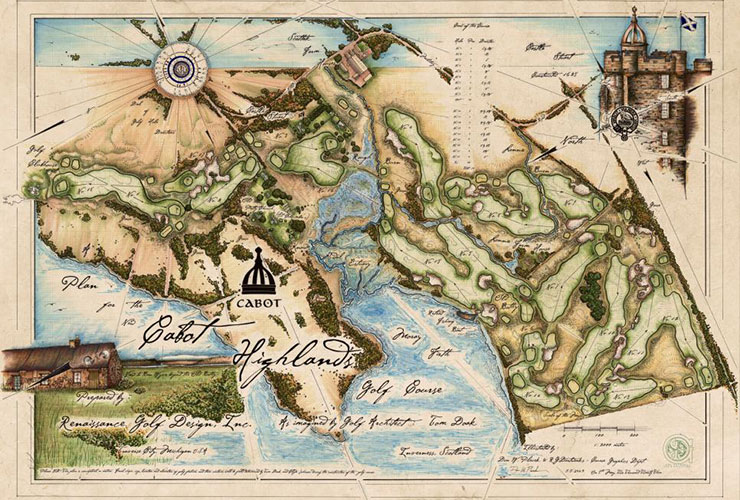Don Placek’s gorgeous rendering of the new Tom Doak course at Cabot Highlands in Scotland.
The construction of new golf holes is not a common sight in Scotland, but it’s happening in the Highlands just north of the town of Inverness where Tom Doak and his team have begun the construction of his original course at Cabot Highlands.
Located on Moray Firth just five minutes from Inverness airport, the expanded Cabot Highlands development includes the Castle Stuart course, designed by Gil Hanse and the late Mark Parsinen in 2009, the yet-to-be-named Doak course, a new clubhouse and upscale residences.
After working recently on true links sites at St Patrick’s in County Donegal, Ireland, and Te Arai in New Zealand, as well as in the malleable sandy soils of central Wisconsin at Sand Valley (building The Lido, opened this summer, and Sedge Valley, opening next summer), the Cabot Highland project poses a different type of challenge for Doak. Namely, creating a course that matches the splendour of the seaside site, and one that looks and plays like a links despite not having the links soils and undulations.
The Doak course will have many of the same views and perspectives at the neighbouring Castle Stuart course.

The Doak course will have many of the same views and perpectives at the neighboring Castle Stuart course
It might be assumed that natural links (defined basically as non-arable oceanside land with sandy soils, rumpled, dunelike movements and native fescues and other grasses and plants, sometimes gorse) occur around the coast of Scotland. Actually, only about 300 miles of the country’s 7,500-mile coast is considered links, or about 4 per cent. Links are rare and specific, and while the Inverness region possesses timeless links such as Nairn, Royal Dornoch and Brora, the section of land for the Doak course doesn’t fit the category.
The golf features at the new course will need to be imagined and constructed, like those at Castle Stuart were. The site, located on a bay just east and south of the existing courses, has its advantages, including lovely water views, holes that jump and play along a tidal estuary, brush past the Old Petty burial ground and cross to and fro over Rough Burn.
The holes are laid out like a grand prix course with parallel runs that chicane back and forth (one through four; 16 though 18), make a series of left-hand turns, switch back, then make a series of right-hand turns before hitting the homestretch along the edge of land, all illustrated gorgeously above by Don Placek of Renaissance Golf.
The specific details and nuance of the holes and their shaping will be developed in the field this autumn and next, with the opening of the course expected in 2025. Cabot Highlands and the Doak course adds another magnetic force that should not just attract players to the north of Scotland, but also keep them there longer.









